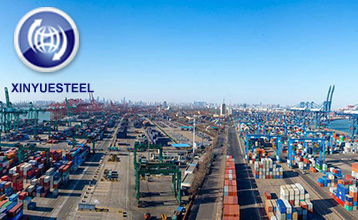The thermal coal market outlook will show a trend of first up and then down
Sep. 14, 2020
Since the beginning of 2020, thermal coal has been in a tepid, narrow oscillation pattern at the end of last year. After the public health incident, the market has undergone major changes. Like most industrial products, thermal coal has gone out of a very perfect V-shaped reversal, and once broke through the year's high.
The senior researcher of Founder's mid-term thermal coal futures believes that the reason is that the falling market is a short-term mismatch of supply and demand, but the rising market is more due to the continued tightening of supply. In other words, the trading logic in the first half of this year is more on the supply side. As far as the current situation is concerned, the expectation of loosening on the supply side is relatively small, the investigation of Inner Mongolia has continued for two decades, and the issuance of coal management tickets is still tight. The safety supervision of coal mines in Shanxi, Shaanxi Province is still strict. The addition of factors such as flood prevention and control caused by more rain this year indicates that the output of upstream coal mines will not increase significantly in the short term.

The reporter found that under such a "new normal" with tight upstream, the market has become extremely sensitive to short-term disturbance factors, such as the recent Daqin line accident. In addition, as the pace of macroeconomic recovery accelerates, power consumption is also rising month by month, but one of the things that needs attention is the output of hydropower. Hydropower in the first quarter of this year is far worse than last year's wet market, but the second and third quarters have caught up and the amount of precipitation far exceeds previous years. In addition to the full production of hydropower during the wet season, the larger water storage capacity will also extend the time for hydropower to output.
What I should pay attention to is that the import coal policy needs attention. The tightening of this year's import policy is the biggest external factor driving coal demand for domestic trade. At the moment when power plants are replenishing their warehouses in advance in winter, the exhaustion of import quotas has caused many coastal power plants to purchase coal for domestic trade.
"There will be no major changes in the supply and demand pattern in the third and fourth quarters. The high inventory operation mechanism of power plants will make the peak season replenishment more moderate. Emergencies will still be the key to the short-term market situation. The coal price is expected to be short-term. The operation will be stronger, and there will be a certain degree of decline afterwards. The overall situation will be rising first and then falling. The main operating range is between 540-600 yuan/ton." Hu Bin said.



